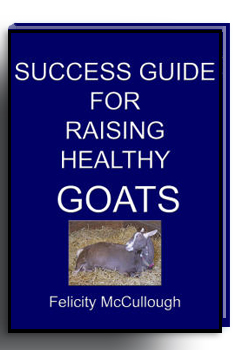Best Goats For Meat
In many countries, more goats are kept for meat than for any other purpose, and many people prefer goat meat to any other. Since slightly more than half of all goat kids are male and only a few mature bucks are needed for breeding, most young bucks are raised for meat.
Surplus goats of any breed may be used for meat, but a breed developed specifically for meat puts on more muscle, and does so more rapidly, than other breeds. In the United States, three types of goat are kept primarily for meat.
There are two types of goat meat production in the United Kingdom:
1. Poorer milking goat females (does), which are bred with a meat goat breed, to produce goat meat from offspring;
2. Bred to produce goat kids from male and female meat breeds. They are then suckled and reared, akin to lamb production.
Goats can be prolific in breeding. Goats are very resilient. Goats adapt to the environment in which they are reared and the terrain upon which they are grazed and farmed.
Goat meat is considered healthy, as it is a lean meat. It has reduced fat and cholesterol content. As a consequence, goat meat is growing in popularity.
The popularity of the meat breed is influenced by the taste of the meat of the breed of the goat. This varies globally as preferences differ.
Boer. The main meat breed today is the Boer goat. Boers originated in South Africa, where they were developed for their rapid growth, large size, high-quality meat, and uniformity of size, meat quality, and colour. The Boer has a white coat, a brown or dark red head with a white blaze, and horns that curve backward and downward. A mature doe weighs 150 to 225 pounds. A mature buck weighs 175 to 325 pounds.
Spanish. Before Boer goats became popular in the United States during the latter part of the 20th century, most meat goats were essentially those that were left to roam over brushy range or forest land in the South and Southwest to keep the land cleared of brush and undergrowth. These goats are often called Spanish goats because the first feral herds were brought to this country by Spanish explorers and sometimes left behind to furnish meat for future expeditions. Because these goats vary widely in shape and colour, the term Spanish doesn't really refer to a specific breed. Mature does weigh 80 to 100 pounds; bucks weigh 150 to 175 pounds.
San Clemente. During the 1500s, Spanish goats were left on San Clemente Island, off the California coast near San Diego. A few descendants still survive as a kind of living history, showing us what goats must have looked like 500 years ago. At one time, so many goats populated San Clemente that they nearly destroyed the island's vegetation. However, because of a successful eradication effort, the goats are now in danger of disappearing. San Clemente goats are smaller and more fine-boned than other Spanish goats, and their horns grow more upright. They come in all colours, the most common of which is tan or red with black markings. A mature doe weighs 30 to 70 pounds. A mature buck weighs 40 to 80 pounds.
Myotonic. A rare goat formerly raised for meat, but that is today more of a curiosity, is the myotonic goat. This animal is also called the Tennessee fainting goat, the Texas nervous goat, or the wooden leg goat. Myotonic goats are not a specific breed, but they share a genetic disorder called myotonia. When a goat with myotonia is frightened by a loud noise, its muscles contract and its legs go stiff. If the animal is caught off balance, it falls to the ground and can't get up again until its muscles relax. Frequent tensing and relaxing of the muscles gives myotonic goats heavy thighs, making them suitable as meat animals. Myotonia also keeps these goats from becoming aggressive, making them good pets. Because they cannot climb or jump like other goats, they are more easily confined, but they also make easy prey for dogs and coyotes.
The origin of myotonic goats has been traced back to four goats brought to Tennessee in 1880 by a man from Nova Scotia who later disappeared, leaving the goats behind. When those goats were bred, their odd genetic trait was inherited by their offspring and passed on through other generations. Myotonic goats come in a variety of colours. Mature does weigh about 75 pounds; mature bucks weigh up to 140 pounds.
Some other best of goat meat breeds are consider to be: Alpine goat, American LaMancha goat, Angora goat, Beetal goat, Black Bengal goat, Damascus goat, Kalahari goat, Kiko goat, Fainting goats, Jabal Akhdar goat, Anglo-Nubian goats, Nubian goats, Pygmy goat, Australian Rangeland goat, Saanen goat, Savanna goat, Sirohi goat, Spanish goat, Sudanese Male Desert goat, Tennessee Woodenleg, Toggenburg goat, and Verata goat.
 |
 |
 |
 |
 |
 |
 |
 |
 |
 |
 |
 |
 |
Goat Lap Shop Home
Photographic credits:
Meat Goats, meat, goats, goat, goat kids, male, bucks, breeding, young bucks, raised for meat, breed, muscle, breeds, Boer, meat breed, Boer goat, South Africa, high-quality meat, uniformity of size, meat quality, colour, white coat, brown, dark red head, white blaze, horns, mature, doe, buck, Spanish, brushy range, forest land, brush, undergrowth, Spanish goats, feral herds, Spanish explorers, San Clemente, Spanish goats, San Clemente Island, California coast, San Diegom, population, vegetation. Smaller, fine-boned, horns grow upright, colours, tan, red, black markings. Myotonic, rare goat, raised for meat, Tennessee fainting goat, Texas nervous goat, wooden leg goat, genetic disorder, muscles contract, muscles relax, meat animals, pets, prey for dogs, coyotes, Nova Scotia, offspring, best goats for meat, meat goats, meat goat breeds, keeping goats for meat, raising meat goat for beginners, Alpine goat, American LaMancha goat, Angora goat, Beetal goat, Black Bengal goat, Damascus goat, Kalahari goat, Kiko goat, Fainting goats, Jabal Akhdar goat, Anglo-Nubian goats, Nubian goats, Pygmy goat, Australian Rangeland goat, Saanen goat, Savanna goat, Sirohi goat, Spanish goat, Sudanese Male Desert goat, Tennessee Woodenleg, Toggenburg goat, Verata goat, boar goat,

Updated 23 October 2022 ©
Index Goat Information
About Goats
About Goat Lap Shop
Anglo-Nubian Goats
Angora Goats
Articles
Backyard Goats
Baby Goats
Best Goats For Meat
Best Goats For Milk
Boar
Goats
Blog about Goats
British Alpine Goats
Capra aegagrus hircus
Cheese Making Goat
Christmas Goats
Commercial Goat Farming
Cooking Goat
Copyright
Culling Goats
Diseases of Goats
Domesticated Goats
Endangered Goat Species
Fainting Goats
Female Goats
Farming Goats
Fun Of Goats
Garden Goats
Goats And Other Animals
Goats And Stress
Goat Basics
Goat Bedding
Goat Behaviour
Goat
Books
Goat Breed Standards
Goat Breeding Season
Goat Breeds
Goat Character
Goats And Children
Goat's Diet
Goat's Digestive System
Goat Equipment
Goat's Eyes
Goat Fables
Goat Farming
Goat Farming In India
Goat Fibre
Goat Food
Goat Frolics
Goat Fun
Goat Genome
Goat Giving Birth Video
Goat Hair
Goat Hides
Goat's Home
Goat Hoof Care
Goat Horns
Goat Hooves
Goat Housing
Goat Humour
Goat Husbandry
Goat Husbandry Practices
Goats In Heat
Goat Island
Goat Knowledge
Goat Life Expectancy
Goat's Lifespan
Goat Links
Goat Lotions
Goat Management
Goat Medicine Cupboard
Goat's Nose
Goat Nutrition
Goat
Poetry
Goat Pregnancy
Goat Production
Goat Problems
Goat Skins
Goat Soap
Goat
Songs
Goat Stories
Goat Tagging
Goats Tattooing
Goat's Teeth
Goat Temperament
Goat Transgenics
Goat Viruses
Golden Guernsey Goats
Healthy Goats
Hoof Trimming
How Long Do Goats Live?
How To Buy A Goat
How To Care For Goats
How To Choose A Goat
How To Keep
Goats Healthy
How
To Raise Goats
How To Start Goat Farming
How To Weigh A Goat
How
Vets Can Help Healthy Goats
India Goat Farming
Keeping Goats Information
Kid Goats
Kidding Goats
Male Goats
Mating Goats
Meat Goats
Milking Goats
Minature Goats
Mountain Goats
Nature Of Goats
Nigerian Dwarf Goat
Nimbkar Boar Goat
Pack Goats
Packing And Driving Goats
Pharm Goats and Malaria
Polled Goats
Pygmy Goats
Raising Goats
Raising Goats For Beginners
Raising Goats For Meat
Raising Goats For Milk
Raising Goats For Pets
Raising Goats For Profit
Raising Goats Pros And Cons
Rearing Goats Successfully
Rare Goat Breeds
Reproduction
Saanen Goats
Schmallenberg Virus
Software
Goat Recording
Spider Goats
Transporting Goats
Types Of Goats
Types Of Goat Housing
Vets
And Goats
Vitamins And Minerals Goats
Videos Goats
Water And Goats
Weighing Goats
What Do Goats Eat?
What Is Goat Hide Used For?
External links Goats:
American Dairy Goat Association
American Goat Society
British Goat Society
Dairy Goat Society of Australia
DEFRA
UK
National Pygmy Goat Association
Pygmy Goat Club
Welfare of Goats During Transport
Best Goats Foe Meat 2022

